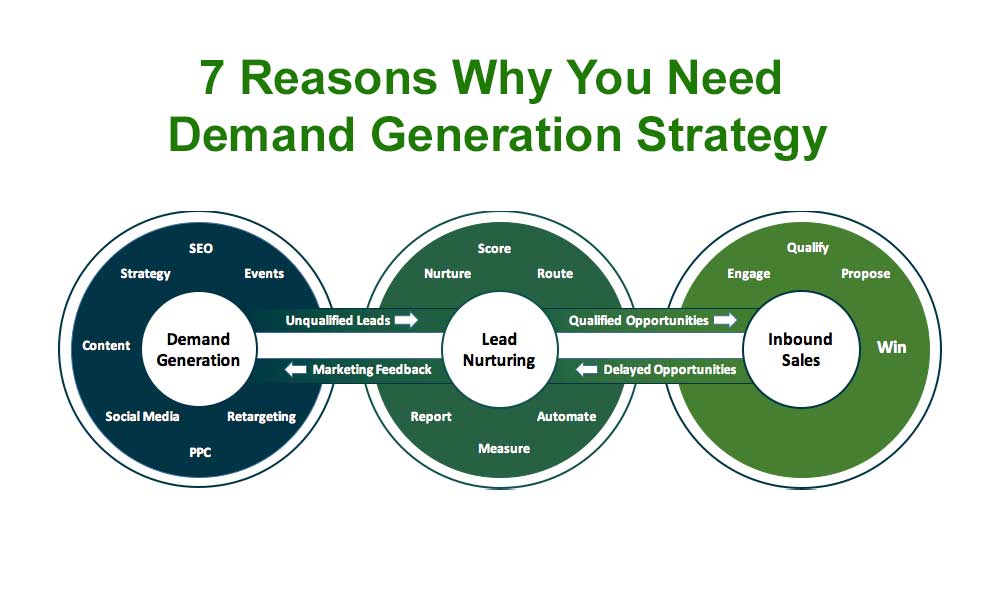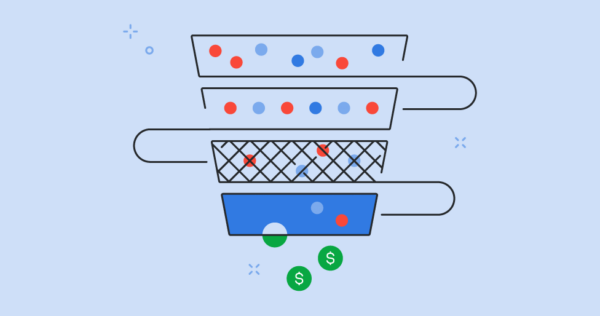Demand generation is an extensive and complex process. It is not simply about selling a certain product to a certain number of people. In today’s corporate terminology, demand generation refers to a wide variety of activities that create awareness and interest in a product for the long-term profits of the brand. The primary goal of demand generation is to tell people who have a particular problem about a specific product that can solve that problem.
Demand generation includes elements of lead generation, marketing campaigns and sales strategies. A well-planned demand generation strategy will ensure that a brand can get new customers for its products/services and provide opportunities for future brand growth through brand loyalty creation and product up-scaling.
Initiating the demand generation plan
To create an effective sales funnel, it is important to focus first on demand generation. But before any active demand generation policies can be implemented, one first needs to understand the kind of demand that has to be created.
- The first issue that brands need to consider is who is their target customer. An ideal customer profile needs to be created for each product, so marketers know who to target.
- The next part of demand generation is to clearly define the pain points of these ideal customers and understand how the product/service will solve that issue.
- The third step is to analyze the buyer behavior of these ideal customers to find out the kind of information they usually seek before making purchase decisions. A good demand generation plan will be able to address every question that buyers will have at different stages of their customer journey.
Once this basic information is available, it can act as the foundation for an efficient demand generation plan. Marketing executives will know who to target, what problems they need to solve, and what additional information they need to provide to ensure conversions.
Importance of demand generation at every step of the sales funnel
Let us take a look at some versatile demand generation strategies that can be implemented at different stages of the sales funnel to maximize conversions and customer loyalty:
Create high-quality content to initiate leads into the sales funnel
This kind of content creation happens at the top of the sales funnel. Here conversions are not expected. The only objective here is to build awareness about the product/service among prospective customers. The content created at this stage can be of various types. Video content is particularly helpful in creating awareness about new product categories. You can create and edit a video online for your products to include features, uses, or specifications that will help viewers understand the advantages of the product and boost sales.
2. Give things out for free
Everyone loves free stuff; there is no doubt about it. So, suppose you have a new product/service you want to create awareness about. In that case, it is essential to begin with lucrative promotions and free downloads that will allow people to use your product and get excited about it. This also creates a buzz around the new launch and increases the chances of successful demand generation.
3. Webinars
Another efficient method of gaining customer interest at the initial stages of the sales funnel is through webinars attended and hosted by top players in the industry. If your brand can get some major influencers in your industry to talk about or endorse your product, it immediately brings in a lot of sales and leads, which can help to create your primary customer base.
4. SEO and PPC
A simple yet very effective demand generation strategy is to use SEO to bring more visitors to your brand website, build awareness, and push sales. But recently, it has been found that just one-word keywords are no longer doing the trick for demand generation. Long-tail keywords are performing better in bringing in customers interested in the products sold.
Pay-per-click advertising can also increase your brand’s visibility and bring in more visitors. However, SEO and PPC will only work if your brand generates a lot of valuable and informative content regularly that solves customer needs and explains to them why they need to invest in a particular product/service.
5. Build a community on social media
Social media marketing has become an essential part of demand generation at every step of the sales funnel. It can be used to create initial excitement about a launch and to keep the brand value of a particular product/service alive. However, just posting some generic content on social media is not enough. A brand needs to create unique signature content that is descriptive and effective in disseminating information.
At the same time, the brand also needs to regularly interact with customers on its social media platforms and build up a community of buyers interested in the products/services of that brand.
6. Do not ignore display advertising
Display advertising refers to the small ads that pop up on the screen when one visits different websites and blogs. Display advertising is generally not very information-heavy, and as a result, it has been tossed to the back burner in demand generation plans.
But the careful analysis will show that display ads still have quite a large impact in building brand awareness. They are especially effective if the advertising is done on platforms regularly frequented by the brand’s ideal customer profile. For example, for a software solutions company, a display ad on some top tech review pages can be highly effective in demand generation.
7. Leverage customer testimonials
This demand generation strategy is usually implemented at the end of the sales funnel when the customer has all the information they need but is still hesitant to make the final purchase. Brands can request their top customers who have had good experiences to leave reviews about them on different rating pages and their websites.
This is a valuable demand generation tool as high customer ratings are often the last push most customers need to make the final decision to purchase a product/service.
Does your brand need a demand generation strategy?
- Without a demand generation strategy, no one will know that you have launched a product/service, and there will be no sales. No one will also purchase a product without adequate information, so demand generation content is beneficial for sales.
- Demand generation creates customer loyalty through various activities like social media communities. In today’s competitive market, no brand can survive without a group of dedicated customers.
- Demand generation strategies generate a lot of analytical data about buyer behavior. Brands can understand customers’ information, when they want it and why they want it. This in-depth look into the customer psyche is critical for a brand to improve its CRM strategies.
- When some steady demand generation channels have been developed, they can also be utilized for future business growth. For example, a demand generation channel like social media developed to create awareness of a new product category can be used again to popularize the next version of that same product.
- Demand generation strategies help maximize the brand’s workforce potential. Demand generation plans require sales and marketing teams to work together and unlock their full potential. A marketing team creates top-of-the-funnel content to create brand awareness, but the sales decks and pitches that the sales reps use cannot be out of tune without the initial content that the leads encounter on social media. So both these teams must work together to provide customers with consistent, accurate information.
- A good demand generation strategy will, over time, bring down the customer acquisition cost for the brand. As the per-customer acquisition cost decreases, the brand’s profit margins will also begin to climb rapidly.
- Demand generation does not work like simple lead generation or SEO marketing, only increasing the number of visitors to a site. Demand generation is targeted toward bringing in high-value customers for a brand that will provide the brand with lifetime value by becoming long-term loyal customers.
Conclusion
Companies can apply plenty of other demand generation strategies to ensure their quick and sustained growth. But what strategy will work for which brand depends entirely on their specific industry and customer profile? So, do your research and read up on case studies of similar brands in the same category to figure out what strategies you should invest in. No business can survive without a good demand generation strategy, so ensure you have your demand generation plans ready before setting up the business.
Various services and tools are also available in the market to make different steps of the demand generation process easier and faster for brands. So, just plan out the process thoroughly, and implementation can be easily executed.




Leave A Comment
You must be logged in to post a comment.